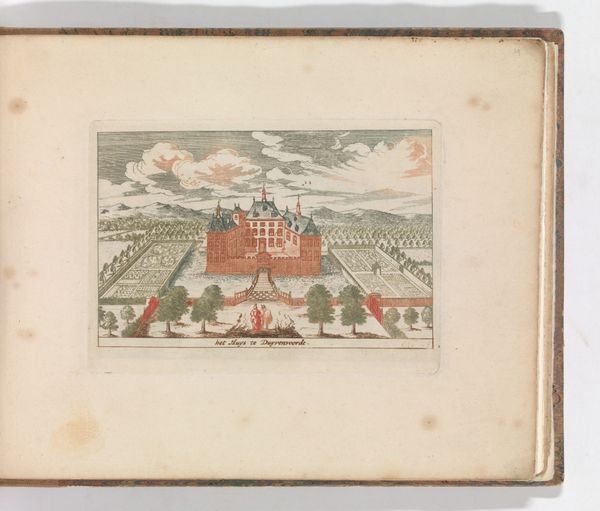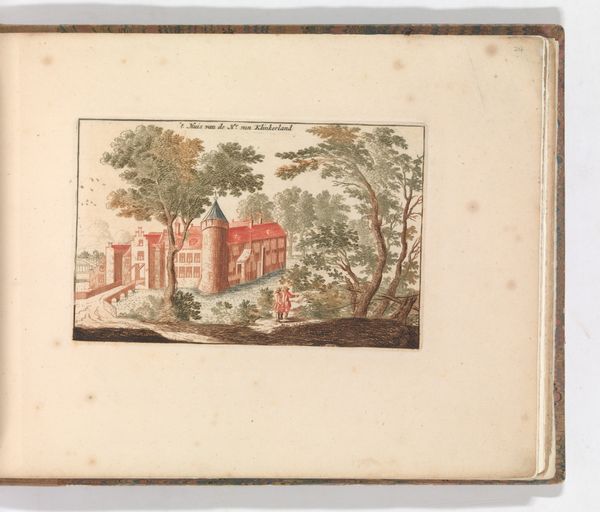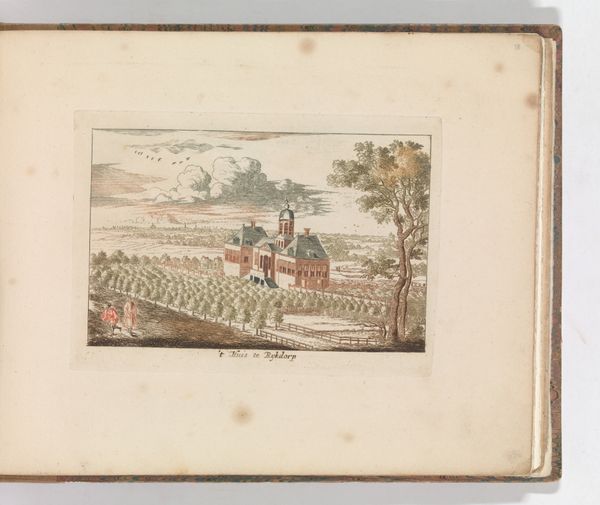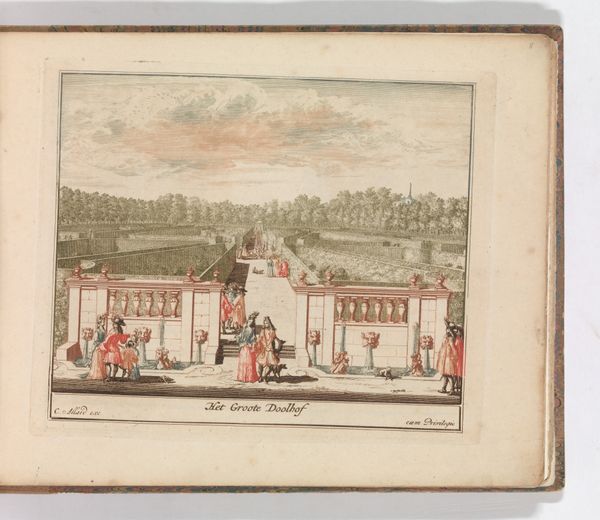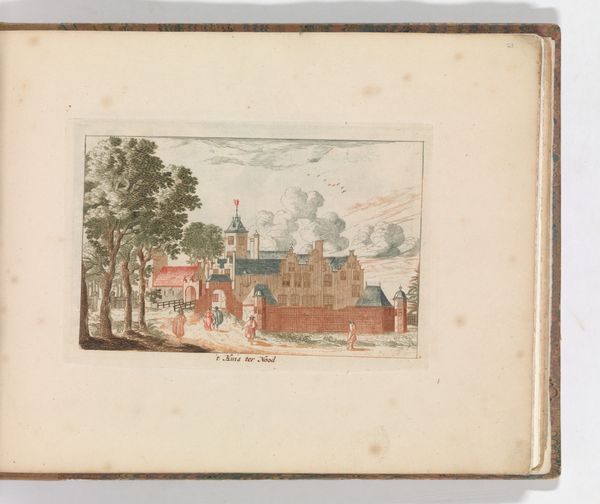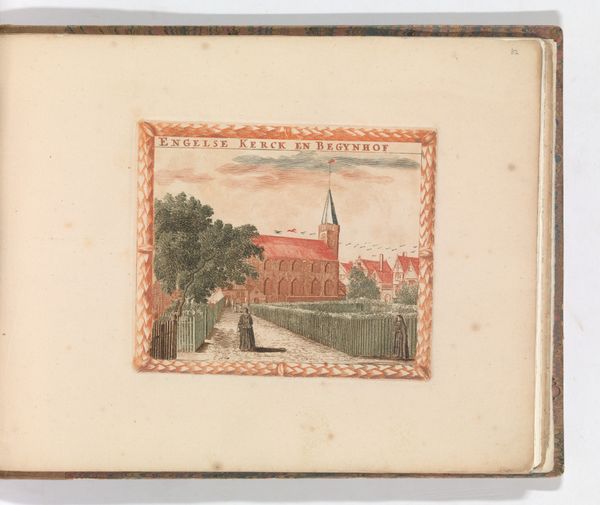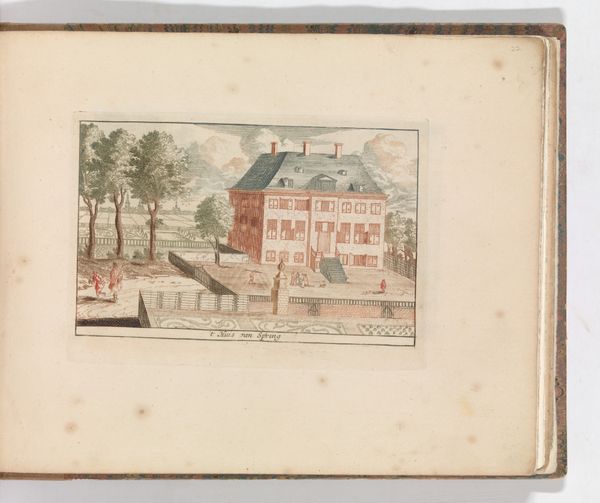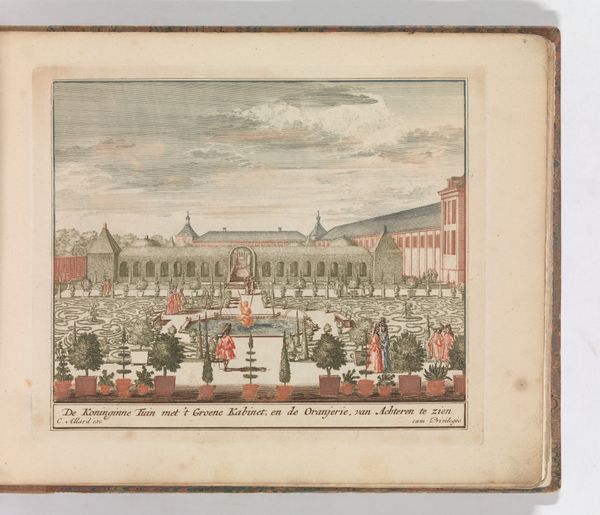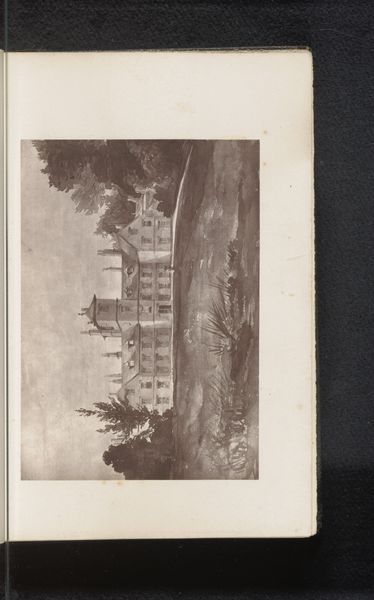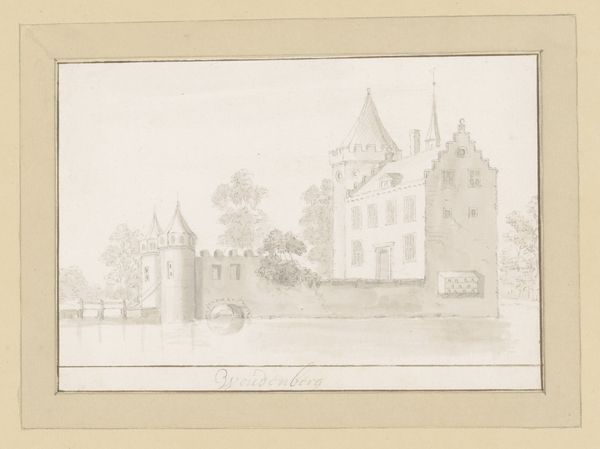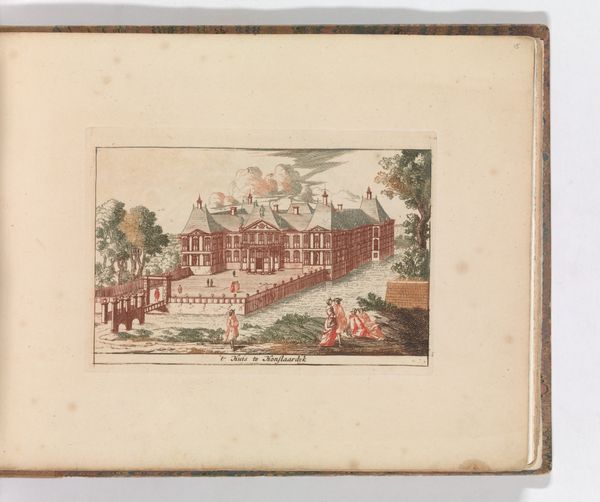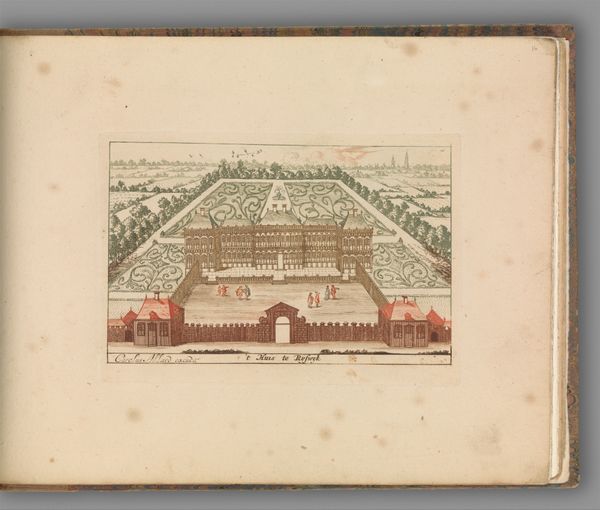
' 't Huis ter Werve', in: Tooneel Der Voornaamste Nederlands Huizen, En Lust Hoven, Naar T Leven Afgebeeld 1660 - 1693
0:00
0:00
drawing, print
#
drawing
#
dutch-golden-age
# print
#
landscape
#
cityscape
Dimensions: Plate: 4 3/16 × 6 7/16 in. (10.6 × 16.4 cm)
Copyright: Public Domain
Curator: Looking at this print, " 't Huis ter Werve'," which translates to something like "House ter Werve," created between 1660 and 1693 by Carel Allard, I am immediately struck by its depiction of an idyllic estate. It is part of a series titled "Tooneel Der Voornaamste Nederlands Huizen, En Lust Hoven, Naar T Leven Afgebeeld"—meaning "Scenes of the Most Important Dutch Houses and Pleasure Gardens, Depicted from Life". The rendering employs drawing techniques transformed into print, creating an impression of serenity and order. Editor: The first thing I noticed is that the rendering is extremely manicured. Everything from the geometrical shrubbery in the rear to the identical trees flanking the walkway evokes the family’s desire to project dominance over nature and assert their social and political position. There’s no chaos here! Curator: Absolutely. It’s a symbolic rendering of power. These country estates were important symbols, functioning almost like advertisements of status. Note, too, how Allard includes little figures within the landscape. Their smallness in relation to the buildings amplifies the grandeur, and they guide the viewer’s eye to the implied owners of the grounds. These could be symbolic, too, not merely representational, as an indicator of life itself proceeding under their influence. Editor: The choice of rendering, through the drawing implemented into a print, offers both precision and reproducibility, catering to the values of that time. This was all about expanding the prestige of Dutch society during its Golden Age through sharing imagery as well as asserting material control of a small slice of the land. Curator: It makes me think of how these kinds of images served to define an emergent Dutch identity, a collective fantasy of a land brimming with prosperity and elegance, shaped not just by economic strength, but by control and, of course, vision. Editor: A vision of order imposed upon the land… even on the inhabitants of the area… So much implicit ideology captured in the Dutch Golden Age. The image definitely captures that moment well! Curator: Yes, it leaves you pondering the layers beneath the surface. Editor: Agreed! Thank you!
Comments
No comments
Be the first to comment and join the conversation on the ultimate creative platform.
